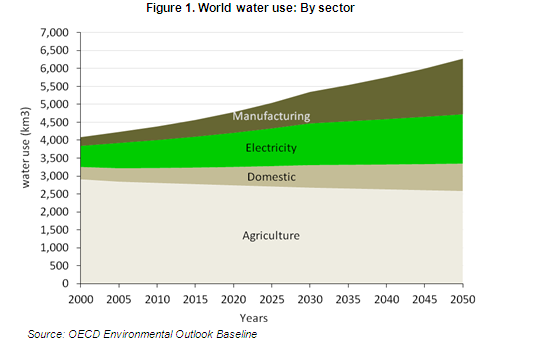
Three new OECD studies say that putting the right price on water will encourage people to waste less, pollute less, and invest more in water infrastructure.
Households and industry in many OECD countries increasingly pay the true cost of the water they consume. Pricing Water Resources and Water and Sanitation Services shows this is done through tariffs – user prices – which better reflect the actual consumption and treatment costs, including water abstraction and supply as well as treatment of wastewater to avoid pollution.
Tariffs for water and wastewater services vary significantly across OECD countries. A bathtub of water in Denmark and Scotland can cost 10 times more than in Mexico while Irish households pay no direct fees for water. Water bill increases over the last decade were primarily driven by higher wastewater charges to cover the costs of investment in environmentally-sound treatment and disposal. In many OECD countries it now costs more to get rid of wastewater than to bring in drinking water.
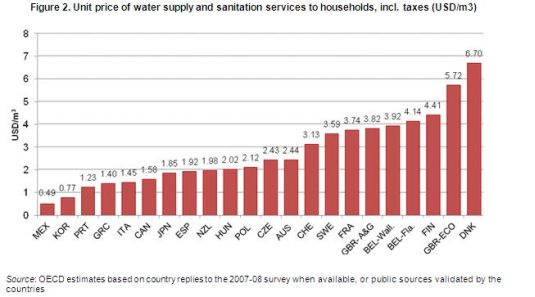
Balancing financial, environmental and social objectives in water pricing policies remains a challenge in most OECD countries. For example, people on low-incomes in Hungary and Mexico sometimes pay over 4% of their disposable income on water and wastewater services.
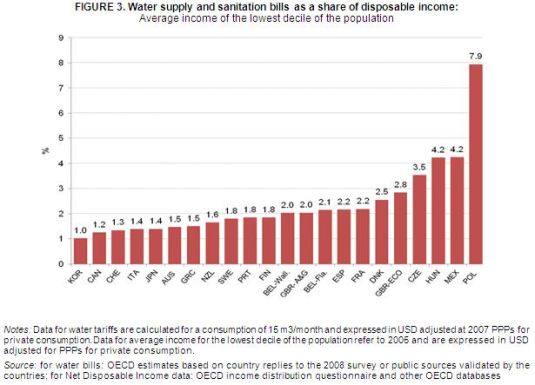
Today agriculture uses more water than households and industry put together – about 70% of global freshwater withdrawals. Sustainable Management of Water Resources in Agriculture shows that while agricultural water consumption decreased in some countries, especially in Eastern Europe, some OECD countries such as Greece, Korea, New Zealand and Turkey recorded large increases since the 1990s. Country specific data on agriculture water pricing are available for Australia, the European Union, Japan, Korea, Mexico, Turkey and the United States.
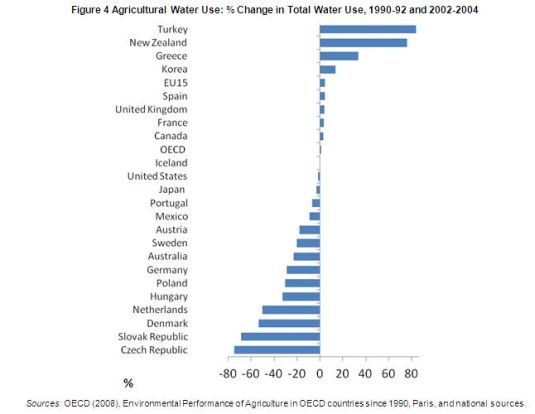
With agricultural production projected to double by 2050 to feed the growing world population, farmers will need to improve water efficiency. The report suggests that farmers should pay not only the operation and maintenance costs for water but also their fair share of the capital costs of water infrastructure. In areas where the price of agriculture water has increased, agricultural production has not fallen – Australia managed to cut irrigation water use by half without loss of output. Also, uptake of existing water-saving irrigation techniques in China and India, both large agriculture water users, is expected to help check the global agricultural water use to 2050.
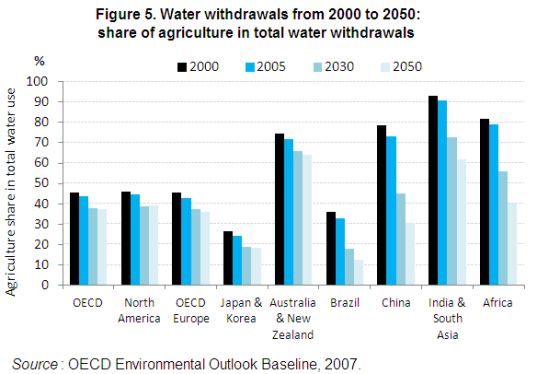
Government subsidies for agricultural production can encourage wasteful water use and pollution. Sustainable Management of Water Resources in Agriculture says that in some countries lower agricultural subsidies, including for water and energy, are making farms cleaner and more efficient. In addition, the report notes, agriculture must adopt long-term strategies to improve water usage, planting crop varieties resistant to droughts or floods resulting from climate change.
In developing countries increasing investment in water and sanitation infrastructure is a priority. Globally 1 billion people lack access to safe water supplies and 2.6 billion are without access to basic sanitation. Doubling annual investment – from USD 15 billion to USD 30 billion – would halve the share of people without access to these basic needs. It would be money well spent – saving lives and reaping benefits of 5-10 times the initial investment.
Innovative Financing Mechanisms for the Water Sector examines ways to attract new financial resources to strengthen investment in water and sanitation services. For example, the Indian state of Tamil Nadu improved access to capital markets by small waste utilities by pooling water and sanitation projects into investment packages and combining different sources of capital to fund the packages. This reduces the risk of default, increases financial volume and cuts transaction costs. Other innovative financing mechanisms that have been successfully employed, and that show further promise, include blending grants and repayable financing, and micro-finance.





